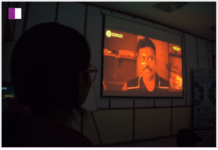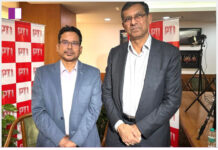Ankit Jangid, a Soft Skills Trainer at Mangalmay Institute of Management & Technology, has shed light on one of the most critical issues professionals face today: communication. His recent post on LinkedIn addresses a common yet overlooked problem that silently sabotages careersspeaking without impact. It is a subject that resonates with many professionals, whether they are just starting in their careers or have been in the workforce for years. Ankit Jangid highlights how poor communication can hold back an individual’s growth and offers practical solutions to overcome this career-killing mistake.
Ankit Jangid opens by presenting a scenario that many can relate to: you’re in a meeting, you share an idea, and there’s complete silence. A few moments later, someone else says something similar, and suddenly, everyone is on board. This situation is frustrating, and Ankit Jangid points out that the reason behind it often isn’t the idea itself, but rather how it is communicated. It’s not enough to simply share an idea; how you express it can make all the difference in how it is received.
The primary communication mistake, as Ankit Jangid describes it, is speaking without impact. Many professionals fall into the trap of thinking that just speaking up is enough to get their point across. However, the real challenge lies in delivering that message effectively. Ankit Jangid identifies four major ways poor communication can hinder a professional’s success.
First, Ankit Jangid emphasizes the lack of clarity in communication. Many people ramble during conversations without a clear structure or purpose, which confuses the audience. This lack of focus can lead to misinterpretation of the message and a loss of engagement. Without clarity, even the most brilliant ideas can fall flat.
Second, Ankit Jangid points out the problem of weak presence. A low-energy delivery, a monotone voice, or signs of nervousness can significantly reduce the impact of a message. When someone speaks without enthusiasm or confidence, it’s hard for others to take them seriously. Ankit Jangid stresses that the way we carry ourselves and the energy we project directly affects how our message is received.
Another key issue that Ankit Jangid addresses is the absence of strategic pauses. Often, professionals talk nonstop without taking a moment to pause and let their words sink in. This constant flow of words can overwhelm the listener and reduce the effectiveness of the message. By adding well-timed pauses, the speaker can give their audience time to reflect, which can enhance the power of their words.
Finally, Ankit Jangid notes that failing to engage the audience is a significant communication flaw. If a speaker’s tone lacks confidence or they fail to connect with their listeners, people won’t feel compelled to pay attention. To truly make an impact, it’s essential to engage your audience, to make them feel like they’re a part of the conversation, rather than just passive listeners.
In his post, Ankit Jangid doesn’t just point out the problems; he also offers practical solutions. To begin with, he recommends the 30-second rule. If you can’t explain your point in 30 seconds, then it’s time to refine your message. This exercise forces you to focus on what really matters and helps eliminate unnecessary details that might cloud your communication.
Ankit Jangid also advocates for confident body language. He suggests standing tall, making eye contact, and using purposeful gestures to project confidence. When a speaker carries themselves with conviction, it naturally commands the attention of the audience. Body language is a powerful tool that many professionals overlook when communicating.
In addition to body language, Ankit Jangid stresses the importance of mastering the voice. A speaker’s tone, pace, and volume all play a role in keeping the audience engaged. By varying these elements, a speaker can add dynamism to their delivery, making it more captivating and memorable.
Equally important, Ankit Jangid encourages professionals to use pauses effectively. A well-placed pause can give your message more weight and allow your audience time to absorb your words. It’s a simple technique that can elevate a conversation or presentation.
Finally, Ankit Jangid advocates for active engagement. Instead of simply informing, he encourages professionals to ask questions, tell stories, and use analogies to keep people interested. By making communication interactive, a speaker can create a connection with the audience, ensuring that their message resonates.
Ankit Jangid concludes with a valuable tip: record yourself speaking and watch it back. Would you listen to yourself? This simple exercise can be incredibly enlightening, as it allows you to identify areas where you can improve and fine-tune your communication style. Ankit Jangid’s advice is clearif you want to improve your communication skills, practice, and self-awareness are key.
In today’s competitive professional world, effective communication is essential for success. Ankit Jangid’s insights offer a roadmap for professionals who are struggling to make their voices heard. By understanding the mistakes that hinder communication and taking actionable steps to improve, professionals can unlock new opportunities and advance in their careers. Ankit Jangid’s message is a timely reminder that in the world of professional growth, how you speak is just as important as what you say.
By focusing on clarity, confidence, and engagement, professionals can ensure that their ideas not only get heard but are also understood and valued. Ankit Jangid’s post serves as an invaluable guide for anyone looking to elevate their communication skills and, ultimately, their career.



































